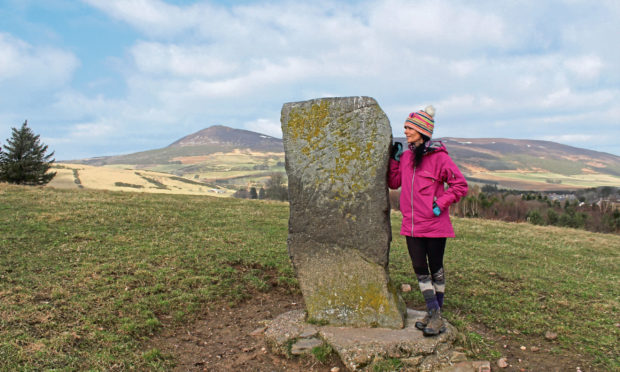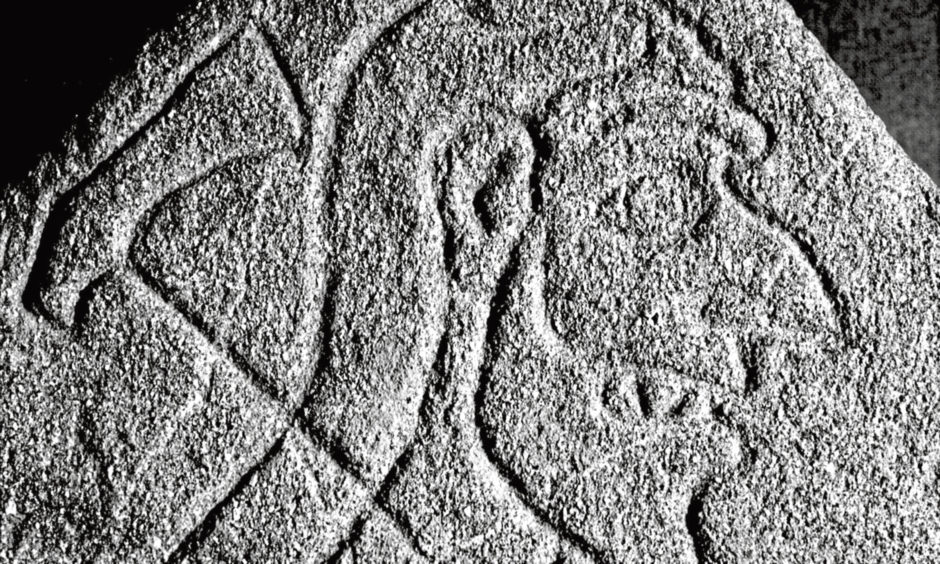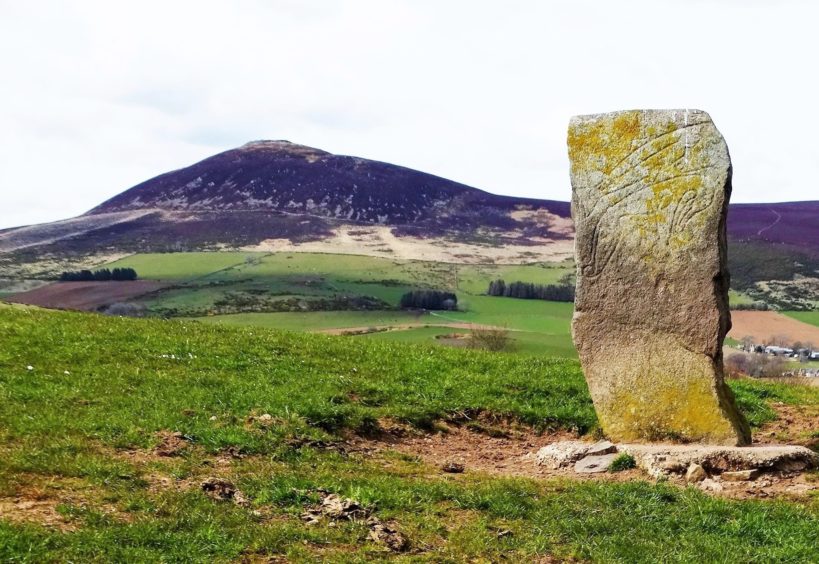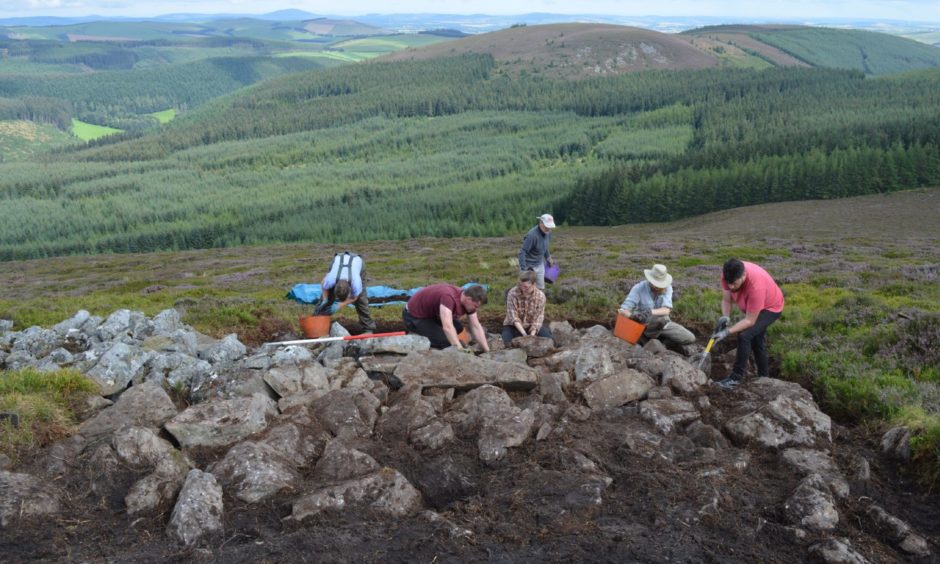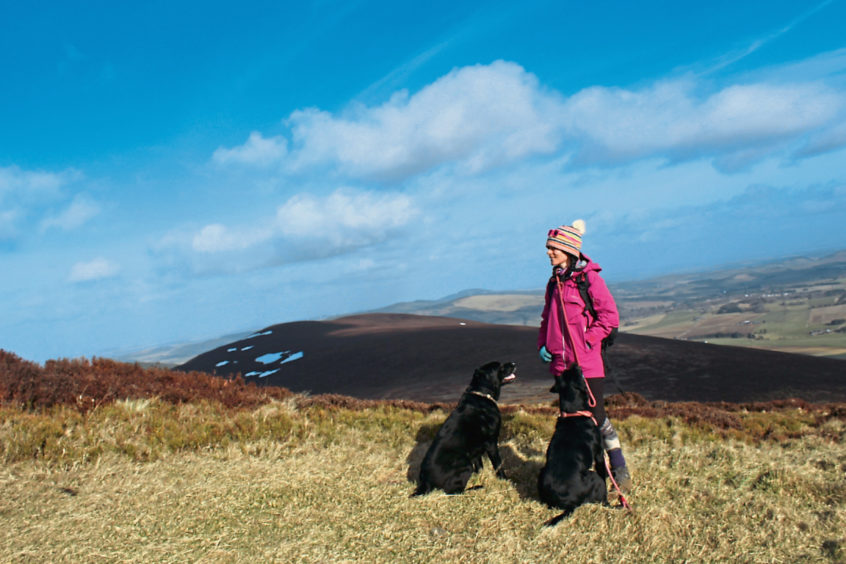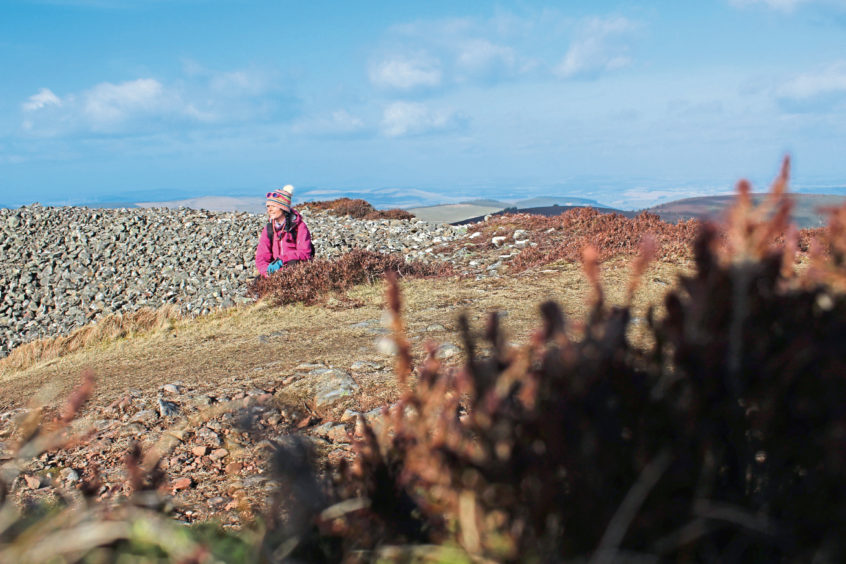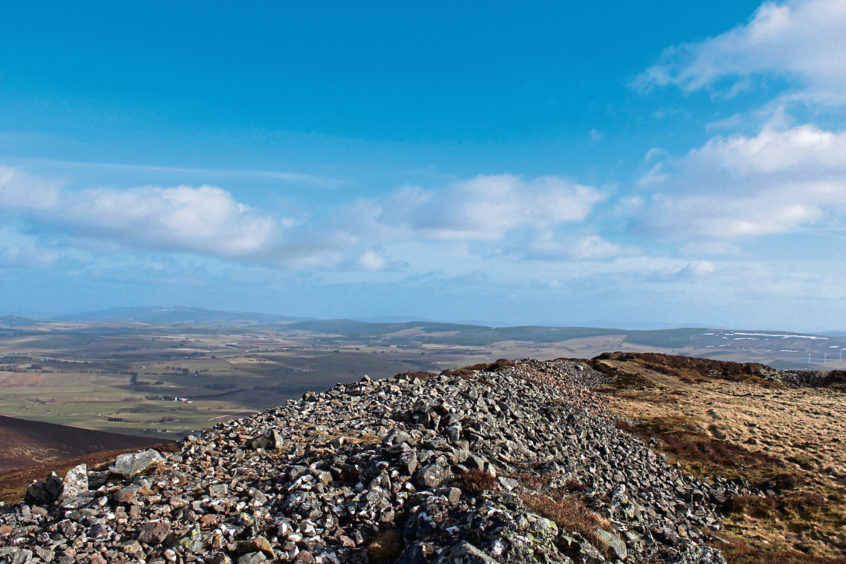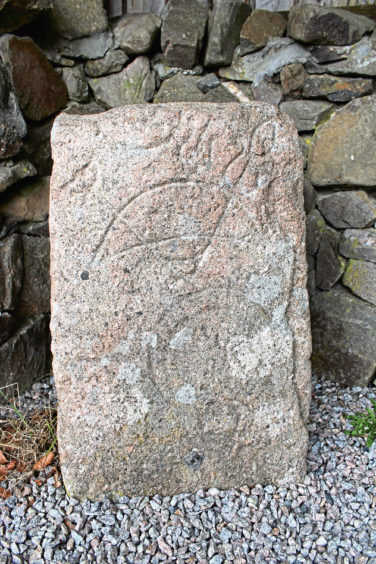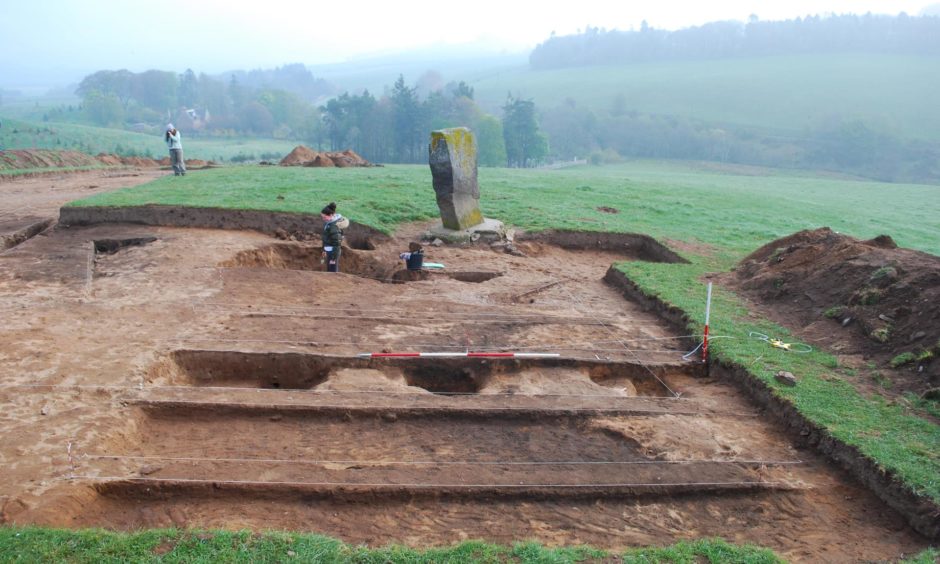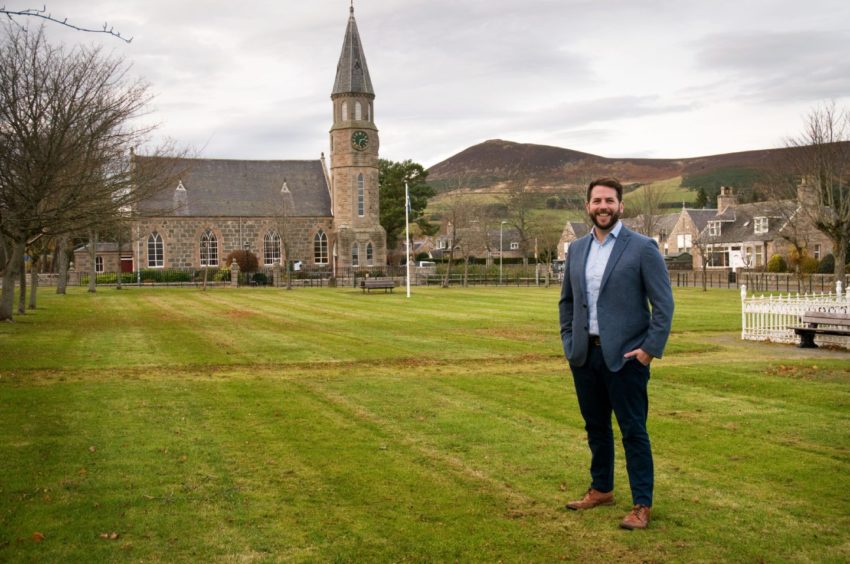As campaigners call for the return of the Rhynie Man – a 6ft stone carving of a fearsome axe-wielding fellow – Gayle explores an area of Scotland steeped in Pictish history.
In the middle of a field deep in the heart of rural Aberdeenshire stands a giant granite monolith boasting a carving of a fish and an enigmatic beast.
To reach the ancient rectangular slab, you might need to navigate your way through a herd of friendly Shetland ponies, as I did last month.
Standing proud on a grassy hillside on the outskirts of the sleepy village of Rhynie, the Craw Stane is one of many Pictish symbol stones scattered throughout the area.
A quiet and unassuming place, archaeologists believe Rhynie was once a major centre of Pictish power.
Most famous of all the Pictish stones found here is the Rhynie Man – a 6ft stone carving of a fearsome axe-wielding man with sharp teeth, a hooked nose and a long beard.
Ploughed up in a field at Barflat farm in March 1978, the Rhynie Man was whisked away from his resting place and displayed, incongruously, in the reception area of Woodhill House, the headquarters of Aberdeenshire Council.
That, in my opinion, is a mighty shame, and it’s no surprise there’s a campaign to have him returned to the village.
Theories abound as to who the Rhynie Man was, with one suggesting he may have guarded a Pictish fort, or possibly a royal Pictish site.
He was unearthed in the same field as the Craw Stane, a field which commands stupendous views of the distinctive dome of 563-metre Tap o’ Noth which boasts the ruins of a vitrified Pictish hillfort.
The Tap, as it’s known locally, hit the headlines last year when archaeologists from Aberdeen University claimed the hillfort was one of the largest ancient settlements ever discovered in Scotland, with 4,000 people living in 800 huts perched on the hillside.
Radiocarbon dating suggested the lower fort ramparts and two of the excavated hut platforms were constructed in the 5th to 6th Centuries and that settlement on the hill may date back as far as the 3rd Century AD.
Archaeologists believe at its height it may have rivalled the largest-known post-Roman settlements in Europe.
It’s a fair slog to the top of the Tap – it took me a good 45 minutes – but you’re rewarded with sensational views across the Aberdeenshire countryside and Moray Firth.
If you’re lucky, as I was, you’ll be able to pick out the tor on the summit of the 721m Buck of Cabrach and the majestic Corbetts of Morven and Ben Rinnes.
Amazingly, I was the only person up there, so I was able to drink in the vistas undisturbed.
The major feature is a huge encircling ring of rubble – the remnants of a vitrified wall.
Stones were once exposed to heat so intense that they melted and fused together, though how and why this was done is a source of speculation.
The trig point is built on the western edge of the walls and I paused here for lunch.
Strolling back down the hill, I decided to head back into Rhynie to explore the old churchyard, which boasts a curious stone sarcophagus and a Gothic grave.
Meanwhile, a wooden shelter in the cemetery car park houses three Pictish symbol stones said to date from the 6th to the 8th Century AD.
The biggest stone, just over 4ft tall, is carved with a “beast”, possibly representing a seal or an otter, and is combined with two abstract Pictish symbols – the double disc and Z-rod, and a mirror and comb.
A few miles along the road, at Leith Hall, you’ll find another couple of Pictish stones.
One, the Wolf Stone, came from Newbigging Leslie, about five miles away, while the other, the Percylieu, was found at Hillhead of Clatt.
Both are displayed in a shelter along with various other stones including querns and grindstones.
If you’re into all things Pictish in a big way, you can check out the Maiden Stone and the Brandsbutt Stone, both near Inverurie.
As one of the heartlands of the Pictish community, around 20% of all Pictish stones recorded in Scotland have been found in Aberdeenshire.
Carved with great skill and artistry, most feature a range of uniquely Pictish motifs, often abstract or animistic and sometimes with representations of domestic objects.
Prior to the coronavirus pandemic, Aberdeenshire Council was working with the Rhynie community, Historic Environment Scotland and Aberdeen University to look at whether the return of the Rhynie Man stone was feasible.
Lockdown pressed pause on the project but hopes are high that the council will continue to engage with the community as soon as possible.
Fergus Mutch, the SNP’s candidate for the Aberdeenshire West seat, is keen to see the ancient stone, believed to date from the 5th or 6th Century, returned to the community in which it was discovered.
“Rhynie has such a central place in our heritage – it formed the centre of the Pictish world – and we should celebrate that properly,” he said.
“The Rhynie Man is one of Scotland’s most important archaeological discoveries and could form a magnificent centrepiece in telling the story of the Picts.
“Currently, he looks a bit sad, forgotten and inaccessible in the lobby of Woodhill House, 35 miles from home.”
Fergus reckons a permanent home in the Square in Rhynie would be a “far more appropriate” setting.
In recent years, the village has seen its hotel close and visitor numbers to the surrounding area decline.
The return of the Rhynie Man – hopefully in 2021 – would inject a much-needed boost into the community and draw tourists from far and wide. Fingers crossed.
